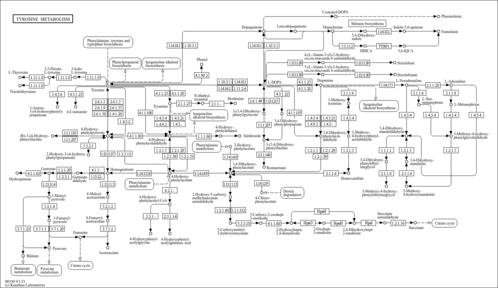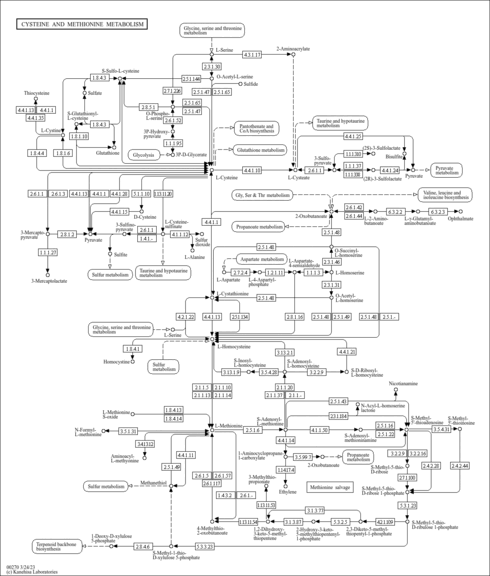| Disease References | | Multiple sclerosis |
|---|
- Forte G, Visconti A, Santucci S, Ghazaryan A, Figa-Talamanca L, Cannoni S, Bocca B, Pino A, Violante N, Alimonti A, Salvetti M, Ristori G: Quantification of chemical elements in blood of patients affected by multiple sclerosis. Ann Ist Super Sanita. 2005;41(2):213-6. [PubMed:16244395 ]
| | Parkinson's disease |
|---|
- Forte G, Alimonti A, Pino A, Stanzione P, Brescianini S, Brusa L, Sancesario G, Violante N, Bocca B: Metals and oxidative stress in patients with Parkinson's disease. Ann Ist Super Sanita. 2005;41(2):189-95. [PubMed:16244392 ]
| | Alzheimer's disease |
|---|
- Molina JA, Jimenez-Jimenez FJ, Aguilar MV, Meseguer I, Mateos-Vega CJ, Gonzalez-Munoz MJ, de Bustos F, Porta J, Orti-Pareja M, Zurdo M, Barrios E, Martinez-Para MC: Cerebrospinal fluid levels of transition metals in patients with Alzheimer's disease. J Neural Transm (Vienna). 1998;105(4-5):479-88. [PubMed:9720975 ]
- Bocca B, Forte G, Petrucci F, Pino A, Marchione F, Bomboi G, Senofonte O, Giubilei F, Alimonti A: Monitoring of chemical elements and oxidative damage in patients affected by Alzheimer's disease. Ann Ist Super Sanita. 2005;41(2):197-203. [PubMed:16244393 ]
| | Fibromyalgia |
|---|
- Ortancil O, Sanli A, Eryuksel R, Basaran A, Ankarali H: Association between serum ferritin level and fibromyalgia syndrome. Eur J Clin Nutr. 2010 Mar;64(3):308-12. doi: 10.1038/ejcn.2009.149. Epub 2010 Jan 20. [PubMed:20087382 ]
| | Iron deficiency |
|---|
- Canatan D, Akdeniz SK: Iron and ferritin levels in saliva of patients with thalassemia and iron deficiency anemia. Mediterr J Hematol Infect Dis. 2012;4(1):e2012051. doi: 10.4084/MJHID.2012.051. Epub 2012 Aug 9. [PubMed:22973495 ]
- Mishra OP, Agarwal KN, Agarwal RM: Salivary iron status in children with iron deficiency and iron overload. J Trop Pediatr. 1992 Apr;38(2):64-7. [PubMed:1569637 ]
|
|
|---|
| General References | - Gal S, Fridkin M, Amit T, Zheng H, Youdim MB: M30, a novel multifunctional neuroprotective drug with potent iron chelating and brain selective monoamine oxidase-ab inhibitory activity for Parkinson's disease. J Neural Transm Suppl. 2006;(70):447-56. [PubMed:17017567 ]
- Piga A, Galanello R, Forni GL, Cappellini MD, Origa R, Zappu A, Donato G, Bordone E, Lavagetto A, Zanaboni L, Sechaud R, Hewson N, Ford JM, Opitz H, Alberti D: Randomized phase II trial of deferasirox (Exjade, ICL670), a once-daily, orally-administered iron chelator, in comparison to deferoxamine in thalassemia patients with transfusional iron overload. Haematologica. 2006 Jul;91(7):873-80. [PubMed:16818273 ]
- Nasolodin VV, Zaitseva IP, Gladkikh IP, Voronin SM: [Correction of iron and immune deficiencies in students from a higher humanitarian educational establishment]. Gig Sanit. 2005 Sep-Oct;(5):64-7. [PubMed:16277000 ]
- Custodio PJ, Carvalho ML, Nunes F, Pedroso S, Campos A: Direct analysis of human blood (mothers and newborns) by energy dispersive X-ray fluorescence. J Trace Elem Med Biol. 2005;19(2-3):151-8. Epub 2005 Oct 24. [PubMed:16325530 ]
- Agarwal MB: Exjade (ICL 670): A new oral iron chelator. J Assoc Physicians India. 2006 Mar;54:214-7. [PubMed:16800349 ]
- Cortese S, Konofal E, Lecendreux M, Mouren MC, Bernardina BD: Restless legs syndrome triggered by heart surgery. Pediatr Neurol. 2006 Sep;35(3):223-6. [PubMed:16939866 ]
- Barkova EN, Nazarenko EV, Zhdanova EV: Diurnal variations in qualitative composition of breast milk in women with iron deficiency. Bull Exp Biol Med. 2005 Oct;140(4):394-6. [PubMed:16671562 ]
- Christoforidis A, Haritandi A, Tsitouridis I, Tsatra I, Tsantali H, Karyda S, Dimitriadis AS, Athanassiou-Metaxa M: Correlative study of iron accumulation in liver, myocardium, and pituitary assessed with MRI in young thalassemic patients. J Pediatr Hematol Oncol. 2006 May;28(5):311-5. [PubMed:16772883 ]
- Kom GD, Schwedhelm E, Nielsen P, Boger RH: Increased urinary excretion of 8-iso-prostaglandin F2alpha in patients with HFE-related hemochromatosis: a case-control study. Free Radic Biol Med. 2006 Apr 1;40(7):1194-200. Epub 2005 Dec 13. [PubMed:16545687 ]
- Gerlach M, Double KL, Youdim MB, Riederer P: Potential sources of increased iron in the substantia nigra of parkinsonian patients. J Neural Transm Suppl. 2006;(70):133-42. [PubMed:17017520 ]
- Jost PJ, Stengel SM, Huber W, Sarbia M, Peschel C, Duyster J: Very severe iron-deficiency anemia in a patient with celiac disease and bulimia nervosa: a case report. Int J Hematol. 2005 Nov;82(4):310-1. [PubMed:16298820 ]
- St Pierre TG, Clark PR, Chua-Anusorn W: Measurement and mapping of liver iron concentrations using magnetic resonance imaging. Ann N Y Acad Sci. 2005;1054:379-85. [PubMed:16339686 ]
- Clardy SL, Earley CJ, Allen RP, Beard JL, Connor JR: Ferritin subunits in CSF are decreased in restless legs syndrome. J Lab Clin Med. 2006 Feb;147(2):67-73. [PubMed:16459164 ]
- Grosse R, Lund U, Caruso V, Fischer R, Janka GE, Magnano C, Engelhardt R, Durken M, Nielsen P: Non-transferrin-bound iron during blood transfusion cycles in beta-thalassemia major. Ann N Y Acad Sci. 2005;1054:429-32. [PubMed:16339692 ]
- Anderson LJ, Westwood MA, Prescott E, Walker JM, Pennell DJ, Wonke B: Development of thalassaemic iron overload cardiomyopathy despite low liver iron levels and meticulous compliance to desferrioxamine. Acta Haematol. 2006;115(1-2):106-8. [PubMed:16424659 ]
- Matinaho S, Karhumaki P, Parkkinen J: Bicarbonate inhibits the growth of Staphylococcus epidermidis in platelet concentrates by lowering the level of non-transferrin-bound iron. Transfusion. 2005 Nov;45(11):1768-73. [PubMed:16271102 ]
- Blanck HM, Cogswell ME, Gillespie C, Reyes M: Iron supplement use and iron status among US adults: results from the third National Health and Nutrition Examination Survey. Am J Clin Nutr. 2005 Nov;82(5):1024-31. [PubMed:16280434 ]
- Yarali N, Fisgin T, Duru F, Kara A, Ecin N, Fitoz S, Erden I: Subcutaneous bolus injection of deferoxamine is an alternative method to subcutaneous continuous infusion. J Pediatr Hematol Oncol. 2006 Jan;28(1):11-6. [PubMed:16394886 ]
- Walter PB, Fung EB, Killilea DW, Jiang Q, Hudes M, Madden J, Porter J, Evans P, Vichinsky E, Harmatz P: Oxidative stress and inflammation in iron-overloaded patients with beta-thalassaemia or sickle cell disease. Br J Haematol. 2006 Oct;135(2):254-63. [PubMed:17010049 ]
- Kontoghiorghes GJ, Kolnagou A: Molecular factors and mechanisms affecting iron and other metal excretion or absorption in health and disease: the role of natural and synthetic chelators. Curr Med Chem. 2005;12(23):2695-709. [PubMed:16305466 ]
| Show more...
|---|

